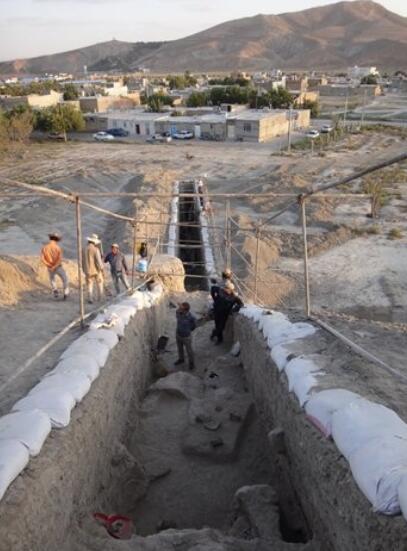Bronze-Age wall discovered in northeast Iran
“Based on archaeological evidence, the wall, which is over four meters in width, is most probably part of a defensive wall constructed in the Bronze Age,” ILNA quoted Ali-Akbar Vahdati who leads the survey as saying on Saturday.
Parts of the wall, that is almost two meters in height, remain intact, the Iranian archaeologist added.

Vestiges of a massive wall have recently been unearthed by a team of international archaeologists conducting a stratigraphy survey across the Tape (Hill) Naderi in Shirvan, northeast Iran.
“Tape Naderi is seemingly flourished on the brink of urbanization and the defensive wall was created to protect its inhabitants around the hill… considering [the fact] that main portions of aged deposits around it is related to the Bronze Age.”
Elsewhere in his remarks, Vahdati said the team is composed of experts from various disciplines including archeology, geology, geophysics, restoration, architecture and surveying.
Iran’s Cultural Heritage, Handicrafts and Tourism Organization oversees the survey under close collaboration with the Chinese Nanjing University and the French National Museum of Natural History (Muséum national d'histoire naturelle).
Iran is also home to renowned Sasanian-era (224 to 651 CE) defensive wall, the Great Wall of Gorgan, which the country eyes on its possible inscription on the UNESCO World Heritage list.

